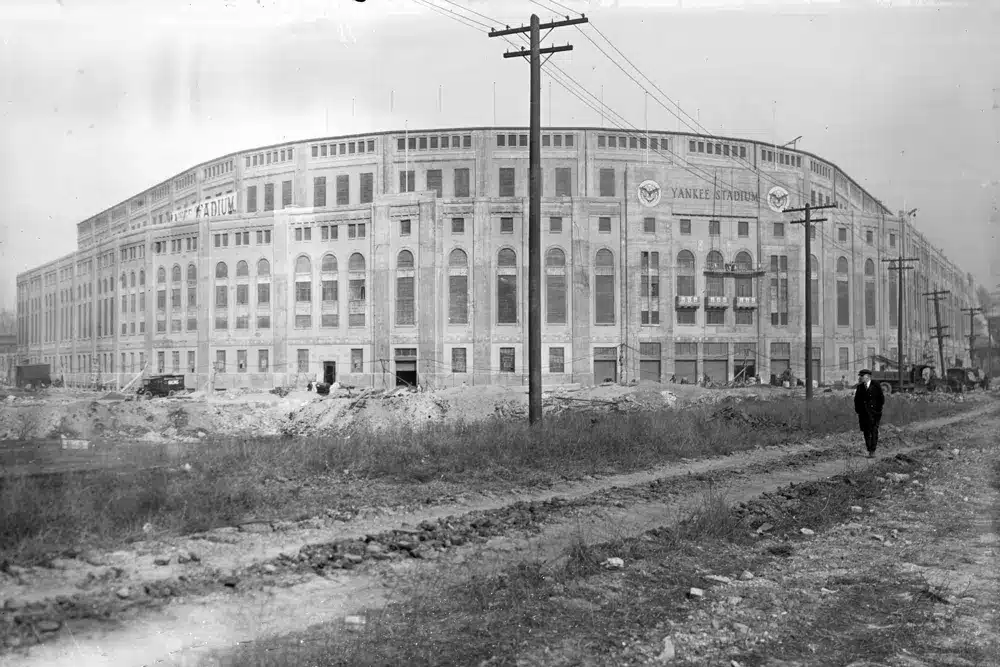NEW YORK YANKEE STADIUM– Roy White recalled being called to the major leagues in 1965 and walking out to the 463-foot sign to the left of the monuments.
“It was only about three blocks away.” “It took two relays to get it back to the infield,” said the former All-Star outfielder.
The old stadium debuted on April 18, 1923, with Babe Ruth hitting the first home run in a 4-1 triumph over Boston in front of 74,200 people, the largest crowd to attend a baseball game.
“Ruth’s circuit added the one touch needed to complete the most picturesque drama in diamond annals.”
Before Tuesday night’s game against the Los Angeles Angels, the historic stadium will be honored at the modern counterpart across 161st St. that replaced it in 2009.
At the original stadium, eleven no-hitters were thrown, including three perfect games. It hosted 100 of 601 World Series games at its closure. The black-and-white images of memorable events are still viewed, as are the accomplishments of Ruth, Lou Gehrig, Joe DiMaggio, Mickey Mantle, and Yogi Berra, as well as more recent color films of Reggie Jackson, Derek Jeter, and Mariano Rivera.
Yankee Stadium cost $2.5 million to build.
Yankee Stadium cost $2.5 million to build, which was enormous at the time but is now the wage of a backup middle infielder. Even after a 1974-75 refurbishment that removed obstructed seats but resulted in the loss of many original aspects, playing a game, there remained a goal for many players and spectators.
“There were a lot of people there and a lot of energy.” They don’t sit on their hands; they make their presence known,” former right fielder Dave Winfield said. “If you played there and for that team, and then for the pinstripes, and then for New York City, you were part of a long tradition.” Expectations are high.”
The ballpark, which was built on land purchased from the William Waldorf Astor estate for $675,000, was planned by Osborn Engineering and took only 284 working days to complete. The Yankees relocated across the Harlem River from the Polo Grounds, where they had been since 1913, to America’s first three-deck ballpark, where they quickly became baseball’s attendance leader.
When fans entered the stadium for the first game, preceded by John Philip Sousa conducting a band, they noticed a short porch in the right field with a low fence and Death Valley, a large stretch of grass in left-center. The iconic facade topped the upper deck, which became famous across the country for the shadows it produced as it crept from the foul area on the first-base side and over the infield during several World Series.
The red granite statues with bronze plaques arrived later: in 1932 for Miller Huggins, in 1941 for Lou Gehrig, and in 1949 for Babe Ruth. They were erected in the center field, and fans could pass through them as they exited the stadium.
Plaques were added to the center-field wall, and all were relocated to a new Monument Park after the reconstruction, which reduced the dimensions to less gigantic proportions.
It also had a feel to it. The supporters made the ballpark shake during pivotal moments.
“Majesty — it gave you the impression that you were in one of those great European cathedrals.” We’re just not used to seeing antique architecture in New York,” said Marty Appel, a former Yankees media executive and author of numerous books about the team.
New York won 26 World Series victories in the old stadium, and several support staff members became well-known throughout MLB: Bob Sheppard, famed for his graceful introductions, was the ballpark’s public address announcer from 1951 until 2007. Pete Sheehy, who began working as a clubhouse attendant and equipment manager in 1926, became its face for players.
It also had a feel to it. The supporters made the ballpark shake during pivotal moments.
Paul O’Neill recalled scoring the game-winning run in Game 6 of the 1996 World Series.
“Joe Girardi hit a triple,” O’Neill recalled, “I remember stepping onto home plate, and the ground was shaking.”
The new stadium in New York is 62% larger than its predecessor. Several of the original elements have been replicated.
“The stadium was truly a baseball cathedral,” current owner Hal Steinbrenner said of the former home of the New York Yankees. “The facade, as well as the outside, Gate 4, were priorities in the new stadium.” We wanted it to look as close to how it did when it first opened in ’23 as feasible. At some level, the new stadium revitalizes the old stadium.
SOURCE – (AP)












